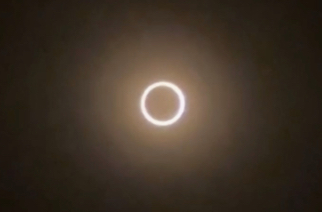The U of MN – Twin Cities Stratospheric Ballooning Team is traveling to Indiana to fly balloon-borne experiments during the total solar eclipse on April 8, 2024.
 The UMN Ballooning Team will be in the path of totality, where the moon completely blocks out the face of the sun for several minutes. Flight camera footage from the total eclipse promises to be dramatic.
The UMN Ballooning Team will be in the path of totality, where the moon completely blocks out the face of the sun for several minutes. Flight camera footage from the total eclipse promises to be dramatic.
The UMN Ballooning Team is part of the “video-streaming” (AKA “engineering”) side of the Nationwide Eclipse Ballooning Project (NEBP). More than 700 students from 75 educational institutions across the United States are participating in the NEBP, about half on the video-streaming side. Live video-streams from balloons in flight on April 8 can be monitored here.
NASA Support
The Nationwide Eclipse Ballooning Project is supported by NASA Science Mission Directorate Science Activation Program, by NASA Space Grant College and Fellowship Program, and by NASA Balloon Program Office.
A National Public Radio article about NEBP and preparations for the total eclipse was published on March 25, including many photos.
The University of Minnesota Ballooning Team developed and is flying many of the same payloads mentioned in the NPR article.
Experiments, besides video-streaming and other cameras, include studies of gravity waves, planetary boundary layer changes, and weather patterns; making general atmospheric environmental measurements such as temperature, pressure, relative humidity, light intensity, and cosmic radiation; and testing space technology proofs-of-concept.


Annular Eclipse in 2023
The UMN Ballooning Team traveled to New Mexico to launch several payloads during the October 14, 2023, annular solar eclipse. During an annular eclipse, the moon is orbiting further away from the earth than during a total eclipse so the sun is not completely blocked, resulting in a dramatic “ring of fire.”
•
National Public Radio Story on NEBP
“Chasing the Moon’s Shadow” – Oct. 14, 2023
“UMN Twin Cities to be Pod Lead
for NASA Eclipse Project”
